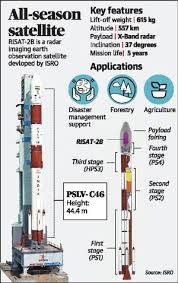7667766266
enquiry@shankarias.in
Why in news?
The RISAT-2B satellite was launched with the PSLV-C46 by the Indian Space Research Organisation (ISRO).
What is the RISAT?

What are the key features?
What is the significance?
Source: Indian Express, The Hindu